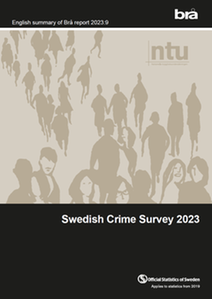- Start
- / Home
- / Crime and statistics
- / Violence and assault
Violence and assault
Over the course of 2022, a total of 84,011 assault offences were reported, which constitutes an increase of 2 per cent by comparison with the figure for 2021. In the Swedish Crime Survey, 2.8 per cent of the respondents stated that they were a victim of assault in 2022.
Percentage exposed to assault
Self-reported victimisation due to assualt. Percentage. The results regarding victimisation in 2006–2015 have been recalculated as the Swedish Crime Survey was carried out using a different method in this period Source: SCS
The Swedish Crime Survey shows that the percentage of individuals who state that they were a victim of assault in 2022 is 2.8 percent of the population (aged 16–84), which is at the same level as 2021. The trend for the period 2006–2015 was one of a weak decline, but the following period show an increasing trend until a decrease in 2020. Since then self-reported exposure to assault has remained at a stable level.
Men (3.3%) state more often that they were exposed to assault than women (2.3%) in 2022.
In terms of age, self-reported exposure to assault was most common in the 16–19 age bracket (men 9.7% and women 6.2%).
Serious assault
A proportion of 0.5 percent of the population (aged 16–84) state that they were exposed to serious assault, which in the SCS refers to assaults leading to injuries requiring medical treatment by a doctor, nurse or dentist. This is the same level as 2021. The prevalence rate remained at a stable level between 2016 and 2019, but decreased in 2020. Since then, the proportion has remained at that slightly lower level.
Men (0.7%) state that they were victims more often than women (0.4%) in 2022.
Self-reported exposure to serious assault was most common among men in the 20–24 age bracket (1.1%) and among women, in the 20–24 and 25–34 age brackets (0.6%).
Concern about assault
The percentage of people who, 2023, state that they are concerned very often or quite often about being a victim of assault is 9 percent, which is almost the same level as 2022 (10%). The proportion has remained the same (2017–2023) with the exception for the temporary increase in 2020.
The percentage of people who are concerned about being a victim of assault is almost the same for men (9%) and women (10%).
The highest percentage is found among men aged 25–34 (13%), and among women aged 16–19 (16%).
Reported assault
Number of reported assault offences: all reported offences, of which against men/boys, against women/girls, and against children, 0 – 17 years of age. Source: Reported offences
Reported offences
Over the course of 2022, a total of 84,011 assault offences were reported, which constitutes an increase of 2 per cent by comparison with the figure for 2021. A total of 38,910 assaults on women or girls were reported which is unchanged by comparison with the figure for 2021. The number of reported assaults against men or boys amounted to 45,101 offences which was an increase of 4 per cent since the previous year.
Cleared assault offences
Person-based clearance rate² for assault (including aggravated, not with a lethal outcome). Source: Processed offences
Processed offences
In 2022, 83,655 assault offences were processed¹, which is unchanged in comparison with the preceding year. An investigation was commenced for the majority of the processed offences (82%), while the other 18 per cent were dismissed with no investigation.
The person-based clearance rate² for assault offences in 2022 was 11 per cent.
The conviction rate for assault offences the same year was 13 per cent.
¹) The statistic for processed offences reports the number of reported offences where the police, public prosecutor, or other investigatory authority has taken a decision regarding the offence.
²) Person-based clearance means that a person suspected of the offence has been tied to the offence through an indictment, the issuance of a summary sanction order, or the issuance of a waiver of prosecution.
- The person-based clearance rate reports the number of offences with person-based clearances during one year as a percentage of the number of processed offences during the same year. As from 2014, an adjusted person-based clearance rate is reported. The metric is essentially structured in the same way as previously, however, it is calculated based on all processed offences instead of all reported offences.
- The conviction rate reports the number of person-based clearances during one year as a per cent of all investigated offences, excluding offences with limitations of investigation during the same period.


